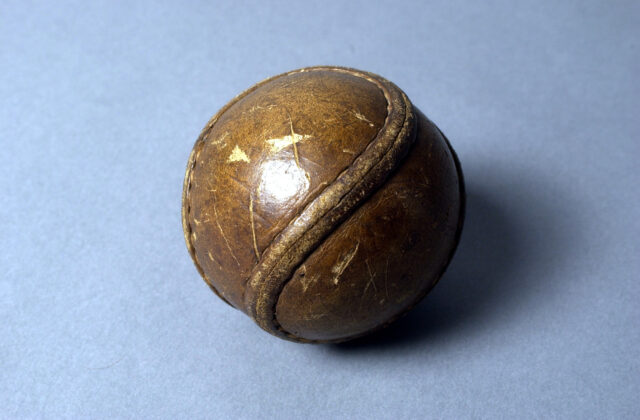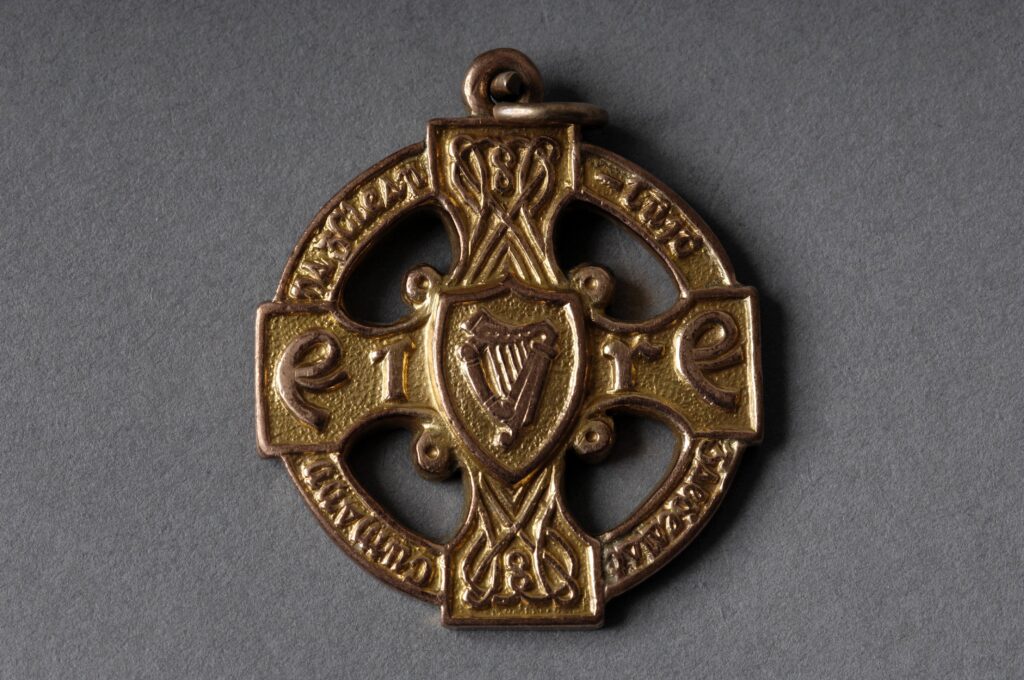On Sunday, 21st July 2024, Clare will face Cork in the All-Ireland hurling final, seeking their fifth title, and fourth since 1995.
However, there was once an 81-year gap between the All-Ireland win in 1995 and the previous one – which was in 1914 – the year Clare won the All-Ireland for the very first time. On that occasion, the All-Ireland final was held on 18th October rather than in July, like this year. The venue was the same as today – it was held at Croke Park in Dublin, which had been purchased the previous year by the Gaelic Athletic Association (GAA). Munster champions Clare beat the Leinster champions Laois on a score line of 5-1 to 1-00, with Clare winning the title for the first time.
The museum collection has three items associated with that All-Ireland final. It includes two All-Ireland medals, one that was awarded to Brendan Considine and another to Ned Grace.
Two medals
Brendan Considine was a teenager and was one of the youngest players ever to win an All-Ireland senior hurling medal in the history of the game. He was born in the Turnpike area of Ennis in 1897 and he and his brothers, William and Turlough, went on to become hurling legends in Clare. He later took a job as a bank official, and this saw him based in various parts of the country in the years following the 1914 victory. He was subsequently on the Dublin team that won the 1917 All-Ireland title, and played on the Cork team that won the Munster title in 1920. He appeared for Waterford before playing for Clare again in 1928. His Dublin All-Ireland medal is also in the museum collection.
A second medal, won by Ned Grace from O’Callaghan’s Mills, is also in the collection. His local GAA club was one of the hurling powerhouses in Clare at the time. In 1908 he was a member of the O’Callaghan’s Mills team that won the Croke Cup. Both Ned Grace and Brendan Considine were involved in the republican movement during the Irish War of Independence.

Hurling ball used in the 1914 All-Ireland Hurling final.
One hurling ball
The third item associated with Clare’s first All-Ireland hurling final victory is a hurling ball. Also known by the Irish name sliothar, the hurling ball of 1914 is larger than modern balls, and is also brown, rather than white or yellow like today, which would have made it harder to see during play.
The final started when a ball was thrown in at 2.45pm by John Lalor of Kilkenny. At the end of the game, Jim O’Hehir of Lack, Ballynacally, who was the trainer of the Clare hurling team in 1914, collected the match-winning ball as a souvenir.
O’Hehir would guide Leitrim to win their first Connacht football title in 1927 and was later involved with the Clare team when it next won the 1932 Munster title. His son Micheál, born in Dublin 1920, was a household name from the 1940s to the mid-1980s, as he was a commentator of GAA matches and horse racing on RTE radio and television.
The people of the Banner County had to wait until 1995 to see a Clare team win the All-Ireland senior hurling title, with Clare winning again in 1997 and 2013.
We’re still collecting!
We have no artefacts relating to these All-Ireland finals in the museum collection. If you have any ticket stubs, programmes, replica jerseys, or any other memorabilia from these finals, and you would like to donate them to the museum collection, we would be delighted to receive them. The object, and the story that you tell to go with them, will be held in the museum for the public benefit, for posterity.
Ned Grace’s All-Ireland Hurling medal and the match hurling ball collected by Jim O’Hehir are part of the long-term display in Clare Museum.
References
Mac Conmara, T (2015), High Prestige: The Story of Clare’s All-Ireland Hurling Championship, 1914, Clare Museum, Ennis

